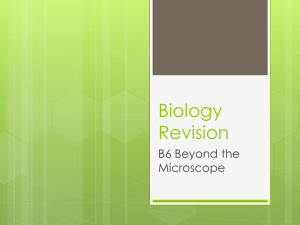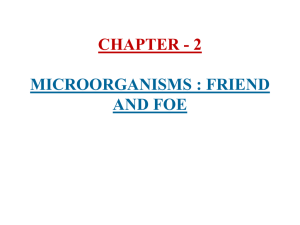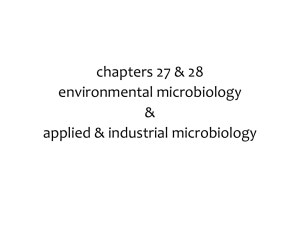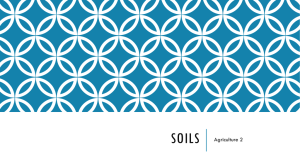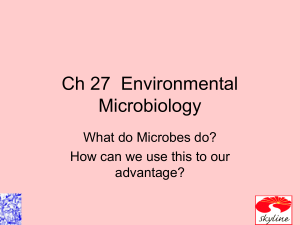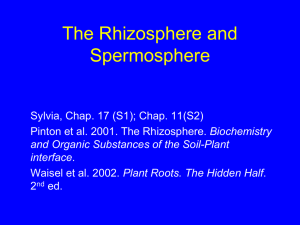CHAPTER - 2 MICROORGANISMS : FRIEND AND FOE
advertisement
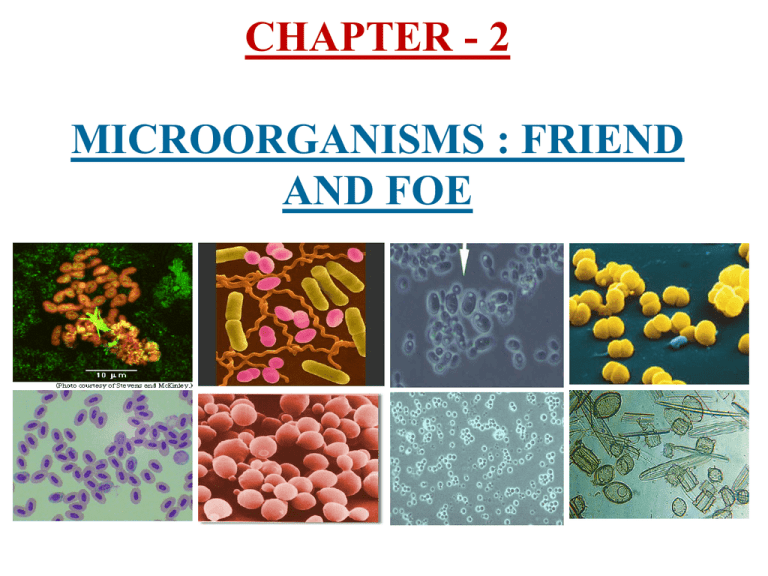
CHAPTER - 2 MICROORGANISMS : FRIEND AND FOE Microorganisms (Microbes) :• Very small organisms which cannot be seen with the naked eye. • may be unicellular or multicellular • may exist alone like amoeba or in colonies like Fungi & Bacteria • found in all kinds of environment like ice cold climate, hot springs, deserts, marshy lands etc. They are also found inside the bodies of other organisms. Types of microorganisms :• • • • Bacteria Fungi : Bread mould, Penicillium, Algae : Chlamydomonas, Spirogyra Protozoan : Amoeba, Paramaecium Virus They are different from other microorganisms as they reproduce only in the body of host organisms like bacteria, plants or animals. Friendly microorganisms • a) Making curd from milk :- The bacterium called Lactobacillus reproduces in milk and helps to convert milk into curd. • b) Making bread :- The fungus called yeast reproduces in flour dough and produces carbon dioxide during respiration which makes the dough soft and helps in making bread, cakes, biscuits, pastries etc. • c) Making alcohol :- Yeast is used for commercial production of alcohol & wine. » The fungus called yeast reproduces in sugar solution and converts it into alcohol. This process is called fermentation. » Louis Pasteur discovered fermentation in 1857. • d) Making medicines :- Some bacteria and fungi are used to make medicines which kill or stops the growth of disease causing microrganisms. Such medicines are called antibiotics. – Eg :- streptomycin, tetracycline, erythromycin etc. Increasing Soil Fertility Some Bacteria and Blue Green Algae are able to fix nitrogen from the atmosphere to enrich soil with nitrogen and increase its fertility. These microbes are called Biological Nitrogen Fixers. Cleaning the Environment Micro organisms decompose dead organic waste of plants and animals and convert them into simple substances which are again used by other plants and animals. Harmful microorganisms i) Some micro organisms cause diseases in plants and animals. Such disease causing microorganisms are called pathogens. ii) Some micro organisms grow in food substances and produce toxic substances and makes the food poisonous. Food poisoning causes illness and even death. iii) Some microorganisms spoil materials like clothing, leather, wood etc. Pathogens • Disease causing microorganisms. • Enter our body through air, water, food, contact or insects. • Diseases which can spread from an infected person to a healthy person are called communicable diseases. – Eg :- cholera, common cold, chicken pox, tuberculosis etc. Some insects and animals act as carriers of disease causing microbes. Eg :- House fly, Female anopheles mosquito (malaria), Female aedes mosquito (dengue fever) etc. Female anopheles mosquito Aedes mosquito 6) Disease causing microorganisms in plants :Microorganisms cause diseases in plants like rice, wheat, potato, sugarcane, apple, orange etc. These diseases reduce crop yield. They can be controlled by using chemicals which kill the microbes. Some common human diseases caused by microorganisms:Human disease Chicken pox Polio Measles Hepatitis – B Tuberculosis Typhoid Cholera Malaria Causative microorganism Virus Virus Virus Virus Bacteria Bacteria Bacteria Protozoa Mode of transmission Air / Contact Air / Water Air Water Air Water Water / Food Mosquito Some common plant diseases caused by microorganisms :Plant disease Citrus canker Rust of wheat Yellow mosaic of Okra (Lady’s finger) bhindi Causative microorganism Bacteria Fungi Virus Mode of transmission Air Air / Seed Water Some common plant diseases caused by microorganisms Food Poisoning • Could be due to consumption of food spoilt by micro organisms • So it is important to preserve food. Food preservation • Chemical method : – Pickles can be preserved by using chemicals like salts and edible oils. – Jams and squashes can be preserved by using sodium benzoate, sodium meta bisulphate • These chemicals are called preservatives. Salting • Food items like fish, meat, amla, raw mangoes, tamarind etc can be preserved by using common salt. • It prevents the growth of microbes By using sugar • Food items like jams, jellies, squashes etc. can be preserved by using sugar solution. • It reduces the moisture content which inhibits the growth of bacteria. By using Oil & Vinegar • Prevents spoilage of pickles because bacteria cannot live in such an environment. • Vegetable, Fruit, Fish and meat are often preserved by this method. heat and cold treatments • Heating food items kills microbes. • Storing food items at low temperatures prevents growth of microbes. storage and packing • Many food items are stored in air tight containers to protect them from microbes. Pasteurisation • The process of heating milk to about 70oC for 15 to 30 seconds and then suddenly chilling it to prevent the growth of microbes • This process was discovered by Louis Pasteur. Pasteurisation :- The process of heating milk to about 70oC for 15 to 30 seconds and then suddenly chilling it to prevent the growth of microbes is called pasteurisation. This process was discovered by Louis Pasteur. vi) By storage and packing :- Many food items are stored in air tight containers to protect them from microbes. 8) Nitrogen cycle :ATMOSPHERIC NITROGEN LIGHTNING FIXES NITROGEN NITROGEN FIXING BACTERIA AND BLUE GREEN ALGAE FIX ATMOSPHERIC NITROGEN BACTERIA TURN COMPOUNDS OF NITROGEN INTO GASEOUS NITROGEN ANIMAL EATS PLANTS UPTAKE BY PLANTS NITROGENOUS WASTE FROM EXCRETION AND DEATH COMPOUNDS OF NITROGEN IN THE SOIL Nitrogen cycle :The nitrogen in the atmosphere is converted into nitrogen compounds in the soil by nitrogen fixing bacteria and blue green algae. Lightning also converted into nitrogen compounds in the soil. The nitrogen compounds in the soil is used by plants for the synthesis of proteins and other compounds. Animals feeding on plants get these proteins and other compounds. When plants and animals die, bacteria and fungi in the soil converts the nitrogenous waste into nitrogen compounds in the soil which are again use by plants. Some other bacteria converts some nitrogen compounds in the soil into nitrogen gas which goes back into the atmosphere. Hence the nitrogen in the atmosphere almost remains constant.

